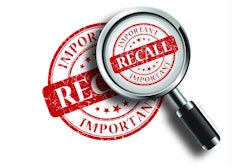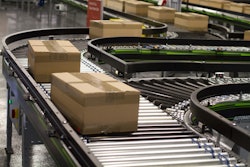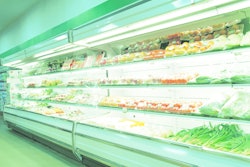
Recalls. Just the mention of the word can send shivers down the spine of a supply chain manager. No one ever wants to have one, and you can’t blame anyone who doesn’t even want to think about it. You should.
It’s surprising how many companies are confident that they will never have a product recall and have no contingency plans in place. To have that confidence is to ignore the simple truth that there are risk factors that are not completely within your control.
Fortunately, recalls are not common. But, they do happen. When they do, the best response is a prepared one. Denial of potential problems is risky. But recognizing risk in your business and preparing contingencies is powerful and bears a direct impact on how well you respond and recover.
Every consumer-goods company should plan for these contingencies, particularly in the food industry, where the potential impact to consumer safety and brand equity has far-reaching implications.
Many companies do take some measures to reduce recall risk, implementing strong quality controls and even positioning quality as a brand differentiator. But, more is required. Think about these external factors that led to high-profile recalls:
- A plant in China that turns out to use paint with cadmium content on a product used by children to consume liquids.
- Dog treats produced overseas that turn out to have ingredients toxic to dogs.
Striving for best-practice quality, with safety baked in, isn’t the whole picture. There is more complexity to contend with, not the least of which are global manufacturing and supplier bases providing raw materials and ingredients for your products. You can impose and monitor quality standards with vendors and suppliers, but measures must be taken to plan for the defects that are outside of your direct control…those low-probability, high-impact events like product recalls.
That will never happen here
Good recall preparedness isn’t being able to look at your quality controls and say “That kind of thing will never happen here.” It’s knowing what you’ll do if it does.
If your company has robust reverse logistics capabilities you shouldn’t make the mistake of thinking that those capabilities will suffice in a safety recall. And, don’t make the mistake of thinking your forward logistics program is recall-ready. Some large consumer-goods companies have tried this approach and learned it doesn’t work that way. Forward logistics don’t effectively reverse for returns management, and recalls are a different set of circumstances altogether. A reverse logistics program is a component of the response to a recall, but it is not by itself a solution to a recall. The process you have in place for everyday returns, seasonal product withdrawal, liquidation, etc., is designed for efficiency, economy and value recovery. It is a continuous process that runs relatively predictably and at scale.
By comparison, recalls are much more issue and event specific. Each will be unique and may be driven by safety and regulatory requirements. It’s important to note here that resources and capabilities are not the same as process. Companies that are good at reverse logistics may have the general agility and capabilities that are necessary for effective recall execution, but recalls are issue-driven. The same process used in everyday returns management won’t completely meet the requirements of a recall. So recall preparedness warrants knowing how you’ll use those resources and capabilities when you need them in that context.
Recalls often come with strictly defined requirements for product withdrawal. Product may have to be destroyed onsite; it may have to go to a designated facility to be destroyed; that disposition may be very market-, location- or audience-specific, subject to regulations at federal, state and even local levels. Take the example of a recall for health hazard or food contamination: there may be requirements for onsite destruction using specific protective equipment and clothing to minimize handling and avoid potential human exposure or cross-contamination within the supply chain.
While recalled products that are already in the hands of consumers will come back to retailers through their returns flow, different rules may apply depending on the nature of the recall. The normal returns process often won’t be adequate. With food, regulatory reporting may require that those returns be accounted for, counted and documented in very specific ways. There are many variables that drive the response and means of conducting the recall.
Collaboration is key
The three most important factors for recall preparedness are cross-functional advance planning and preparation, having the right expertise and capabilities, and collaboration. Collaboration is key. The kind of rapid-cycle coordination necessary for effective recall response will demand solid collaboration of planning across departments, vendors, retailers and potentially other trading partners, depending on the nature and scope of the recall.
The key in planning is having an appropriate strategy built to complement your company’s product portfolio, and ensuring that the plan is tested.
At the end of the day, the recall strategy has to be something people can execute. They have to understand the strategy and process, have the resources and capabilities to execute it, and they have to know how to execute it efficiently and effectively. Testing those elements through a mock recalls is the only way to verify your organization’s preparedness.
Recalls are extremely complex, high risk and fast moving. You’re better off planning ahead and enacting a proven plan than you are trying to simultaneously build and execute a strategy. Consider that you may have to divert resources from everyday business processes to address a recall. Therefore it’s important to see recall planning as a component of your company’s other business continuity plans. A recall is a potential business disruption that warrants minimizing potential cost impacts and revenue implications.
For example, no one doubts that removing product from shelves is a business disruption. But, if you plan ahead, you can identify ways to have replacement product back on shelves as quickly as possible to minimize lack of availability. That goes a long way toward more effectively minimizing the negative impact on revenue and can be an important element in managing consumer confidence in your brand.
Collaboration among the many stakeholders is essential to success. But you won’t pull it off just by having a strategy on paper. You can only be sure by testing the process.
Inmar almost always recommends staging a mock recall. It’s really the only way to know your strategy is good and your people are capable of executing according to plan. It’s often the only viable way to identify issues, see threats to success and plan contingencies.
Don't mock the mock recall
Mock recalls force you to evaluate your resources, possible regulatory contingencies, capabilities to meet them and your ability to do it all with minimal impact to customers, trading partners and your bottom line.
A good mock recall has to be more than just a traceability exercise and checking to make sure you have the resources in place in case you need them. You won’t know how well those resources fit the bill until you test them, see how they perform and adjust to accommodate the insufficiencies you will undoubtedly uncover.
Having faith in your quality controls is one thing, but being prepared is another thing entirely. There’s an old sailors’ proverb that serves as a good reminder to be pragmatic about such things: Pray toward Heaven, but row toward shore.
Feel free to download Inmar’s Top 10 Recall Best Practices.


















